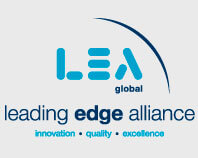On April 16, 2019, the IRS Large Business and International (LB&I) division announced the approval of three new compliance campaigns. All three new campaigns relate to offshore activities of U.S. taxpayers, with one campaign focusing on profits reported by offshore captive services companies.
As detailed in the IRS announcement:
“The section 482 regulations and the OECD Transfer Pricing Guidelines provide rules for determining arm’s length pricing for transactions between controlled entities, including transactions in which a foreign captive subsidiary performs services exclusively for the parent or other members of the multinational group. The arm’s length price is determined by taking into consideration data available on companies performing functions, employing assets, and assuming risks that are comparable to those of the captive subsidiary.
Excessive pricing for these services would inappropriately shift taxable income to these foreign entities and erode the U.S. tax base. The goal of this campaign is to ensure that U.S. multinational companies are paying their captive service providers no more than arm’s length prices. The treatment streams for this campaign are issue-based examinations and soft letters.”
It is common for U.S. multinationals to establish subsidiaries outside of the U.S. to provide services to the U.S. parent company. Such intercompany services can spread over a wide spectrum from administrative support, call center services, contract manufacturing and business process outsourcing to research and development services or financing activities. This campaign aims to ensure that the U.S. taxpayers are not overpaying their offshore captive service providers.
Generally, BT recommends that U.S. taxpayers with related party captive service providers review their transfer pricing arrangement and stay compliant with the arm’s length standard based on the general transfer pricing rules outlined in IRC Section 482, as well as the methods for controlled services transactions specified in IRC Section 482-9.
Specifically, taxpayers should revisit the profit margins of their captive service providers. Some taxpayers may have focused on minimizing transfer pricing risks in foreign tax jurisdictions by leaving a sufficient amount of profit offshore. For U.S. taxpayers that appear to have excessive pricing on such services (e.g., a cost-plus mark-up rate of 10 percent or higher), it is critical to assess the fact pattern related to the intercompany transactions and prepare supporting analysis.
Furthermore, certain foreign jurisdictions hold relatively aggressive positions with respect to captive service providers onshore for multinationals. For example, India has multiple court cases relating to the arm’s length pricing of Indian subsidiaries that provide services solely to their parent companies. The Indian tax authorities introduced the concept of high-end knowledge process outsourcing (KPO) to distinguish from routine business process outsourcing services (BPO) and have argued that KPO service providers are entitled to a higher profit margin (e.g., a cost-plus mark-up rate of 15 percent or higher). Similarly, the Chinese tax authorities have used location saving as its argument to require a higher mark-up rate for captive service providers onshore. The IRS has not provided any formal opinion on such characterizations and arguments adopted by the foreign tax authorities. It is advisable for taxpayers to take proactive actions to consider a transfer pricing analysis from the U.S. perspective. A U.S. transfer pricing documentation report prepared under IRC Section 482 and Section 6662-6(d) serves as the first line of defense in case of an IRS audit and provides penalty protection if any transfer pricing adjustment was made by the IRS.
Contact Us
For more information regarding transfer pricing regulations and compliance, please contact Ben Miller by calling 770.396.2200.




